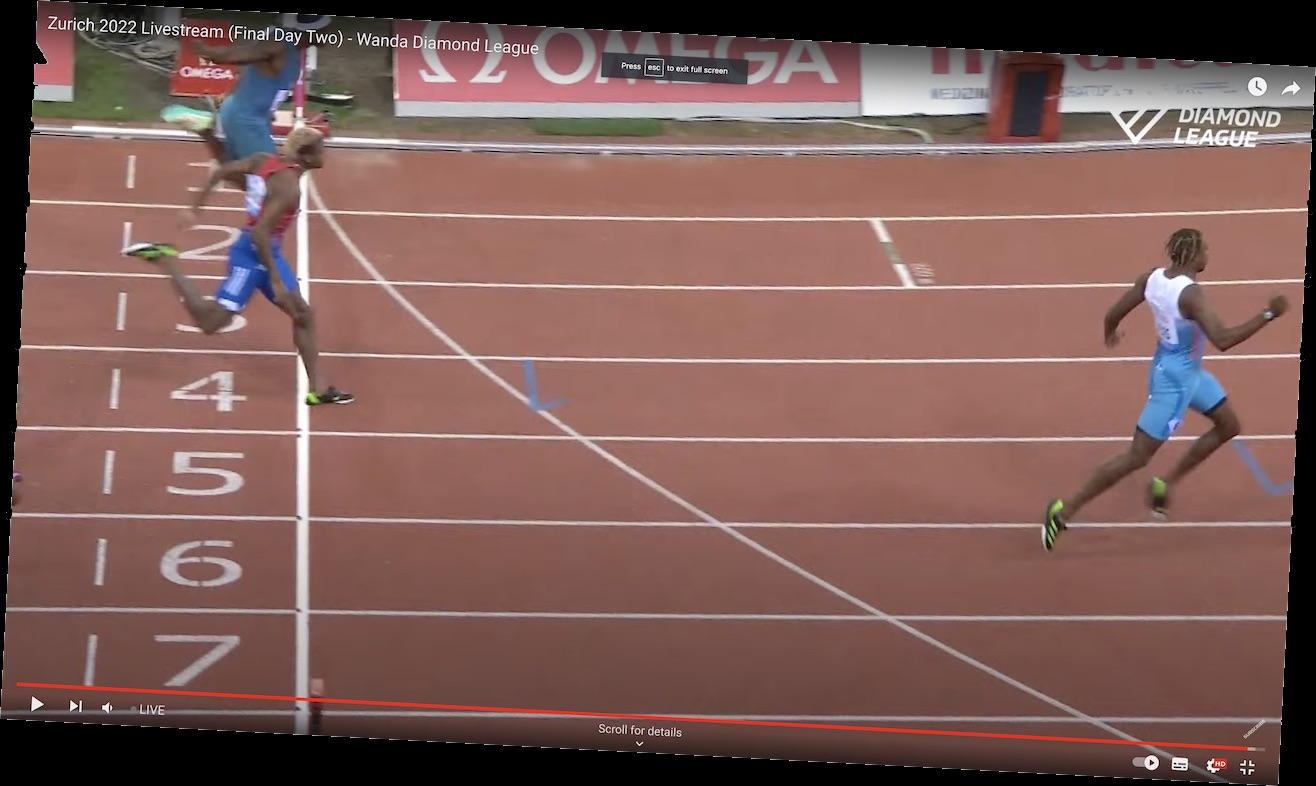Those who follow my blog know that I am regularly criticising the use of photo-finish in order to decide on the arrival order down to millisecond precision. Now, don't get me wrong. It's not the photo-finish itself that I am criticising. It's the way it is used. In my article on photo-finish-obsolescence I was writing that "the analysis of photo-finish, since it is based on human judgement is error-prone and can lead to unfair decisions".
In fact I had already written about this problem in my post on the absurdity of milliseconds:
The rules stipulate that “the athletes shall be placed in the order in which any part of their bodies (i.e. torso, as distinguished from the head, neck, arms, legs, hands or feet) reaches the vertical plane of the nearer edge of the finish line”. The difficulty lies in defining in a precise way and on a deformed photo what is precisely a “torso”. For an athlete dipping for the finish shoulders should definitely count but sometimes the judges cannot distinguish them from a part of the neck. For an athlete running at 10 m/s a millisecond corresponds to just 1 cm. Can we be sure of such a precision when a human eye is called upon to disentangle a difficult situation? My answer is a resounding “no”.
So, as far as milliseconds are used in order to break a tie I am 100 % against this (unless some other, totally automatised method, without human intervention is used. But more on this at the end of the article).
Here I am going to show something that on the surface looks like weakening my case against photo-finish. But as I pointed out from the outset I am not against photo-finish. What I criticise is the decisions based on human appraisal of the photo pretending to be precise down to a mere centimetre. But before proceeding further I will let you watch a few times the video from the Zürich Diamond League final of men's 200 m.
When I watched the final I was convinced that Ogando had beaten Brown for the second place. And I was surprised when the results came out and, based on the photo-finish, gave the second place to Brown for a mere millisecond. Here is the photo-finish.
I could not believe this result and I watched, again and again, the video ending up by making a screenshot of the two athletes crossing the finish line.
Again, Ogando looks as if he were crossing the line ahead of Brown. But then I noticed that the finish line was a tad skewed on the photo. Oh, not by much. It took just a 3 degree counter-clockwise rotation on order to make it vertical.
I used a screen ruler and now I could really appraise the difference between the two athletes. And now Brown looks (very, very) slightly ahead of Ogando. Is there a centimetre of difference there? Frankly, I cannot tell. Given the uncertainties in all the manipulations I think that the situation is clearly undecidable. For me once human judgement enters into the equation the error margin must be of the order of several centimetres and the millisecond precision is just illusory.
So, what is the takeout of all this analysis? First, the impression one has on who does win just by watching the video can be wrong. This is all the more true when an athlete finishes fast catching up with the one who is ahead of him and surpasses him clearly once the finish line crossed. Second, a millisecond precision is illusory and it would have much better if World Athletics accepted not to break a tie of two athletes who have the same time with a precision of a hundredth of a second.
And since you may wonder whether there is a better solution, well, I have already proposed one in an article of mine in the "Imperative Changes" series: use a chip affixed to the sternum of the athlete, one which can trigger the timing mechanism when the athlete crosses the finish line. With present day's technology this is something that can be done very easily and inexpensively. Unfortunately there is no indication that World Athletics is exploring such a possibility.






No comments:
Post a Comment